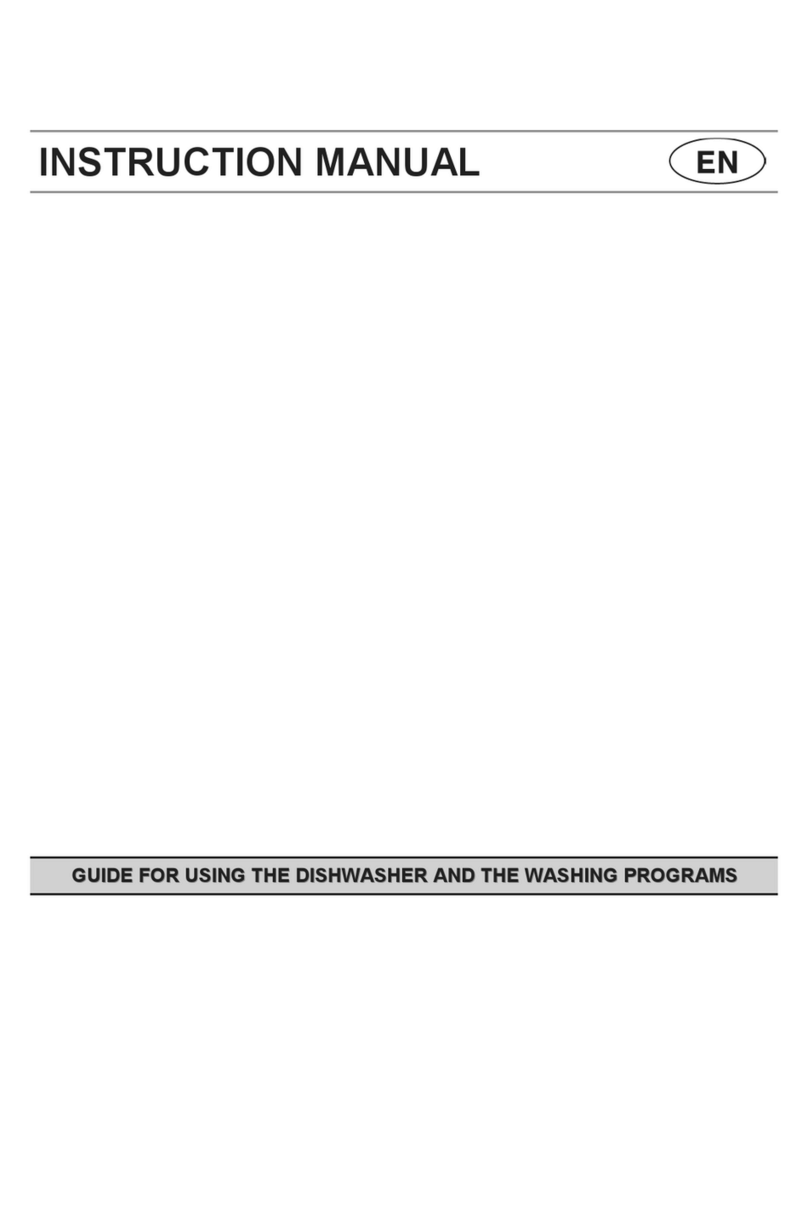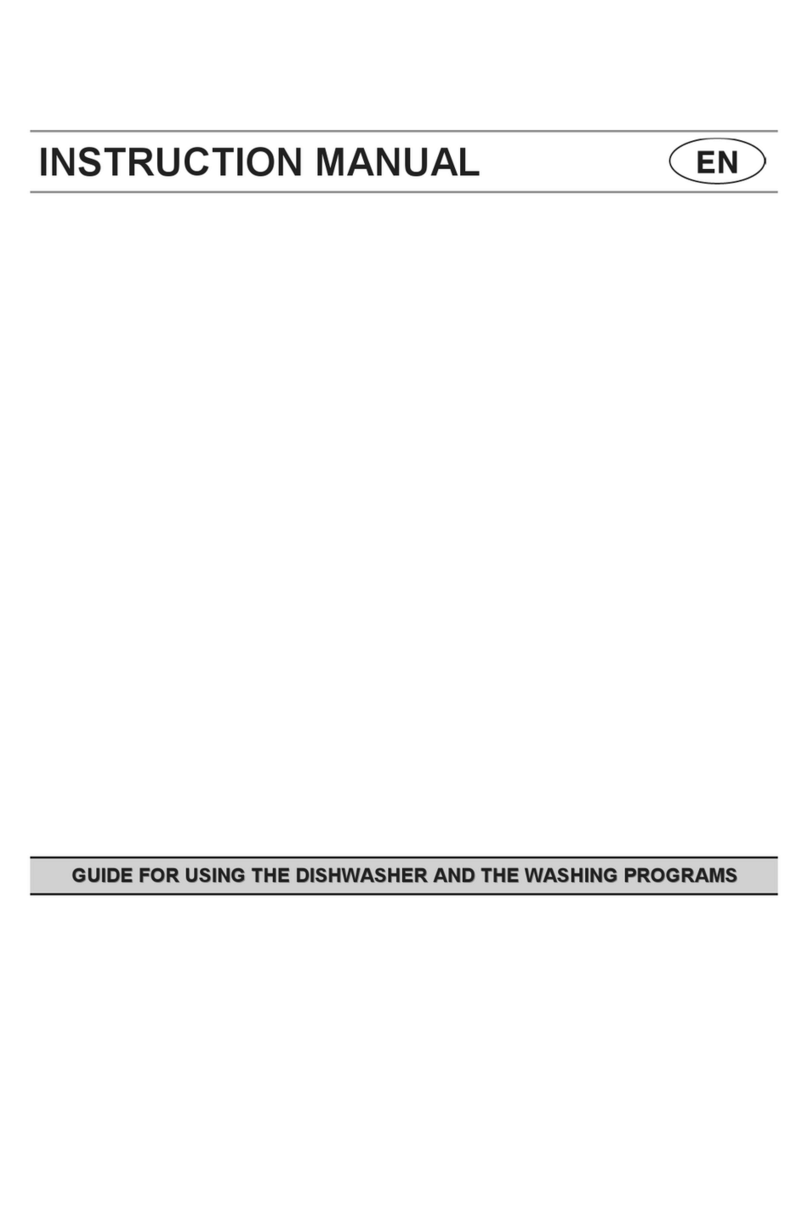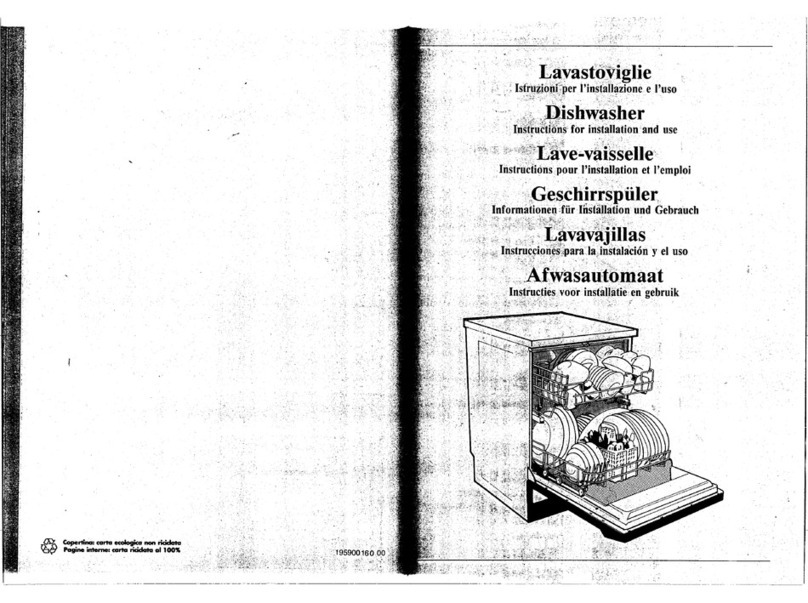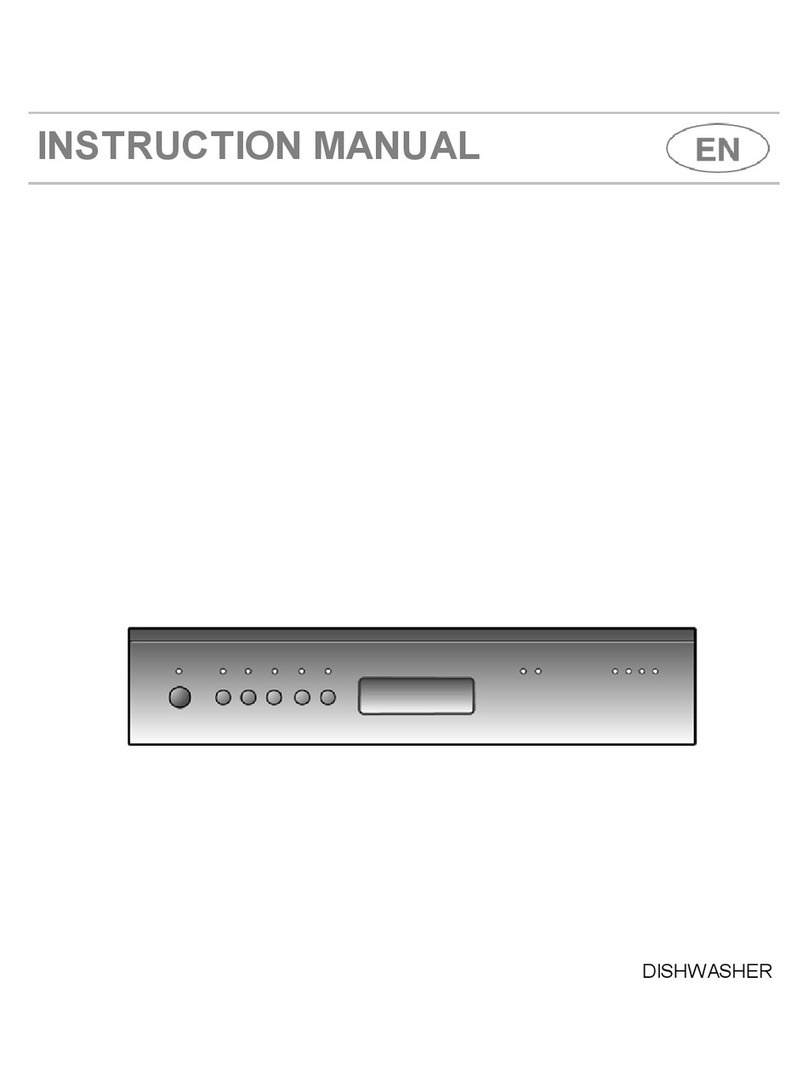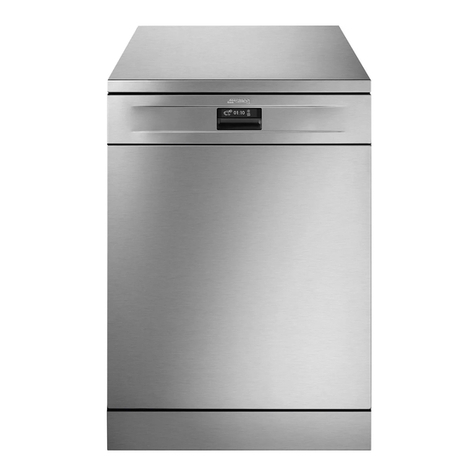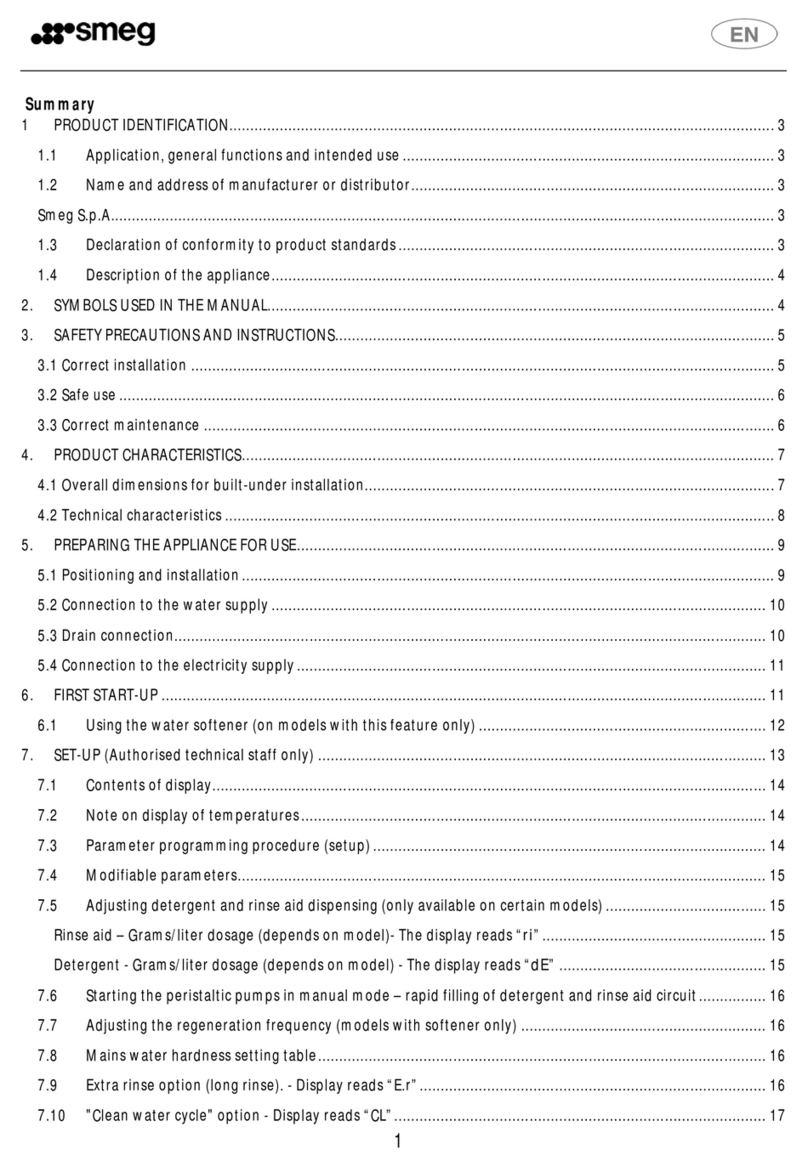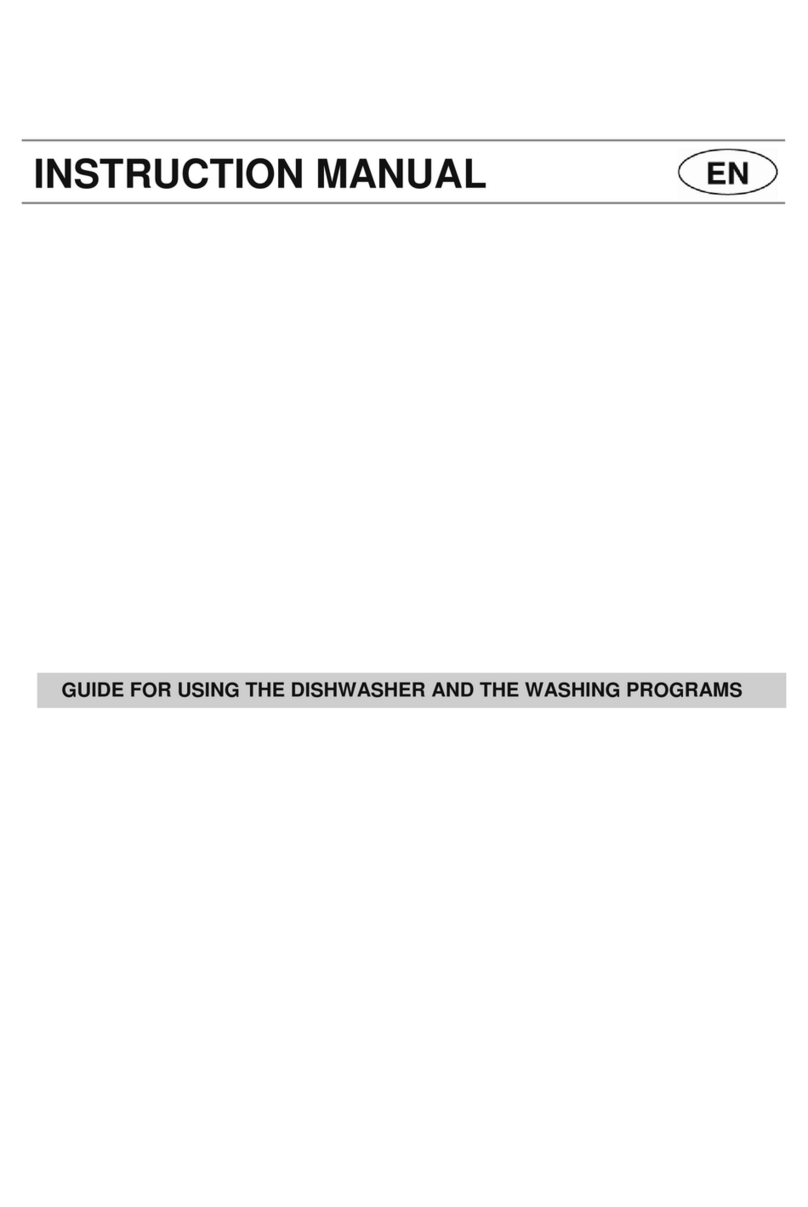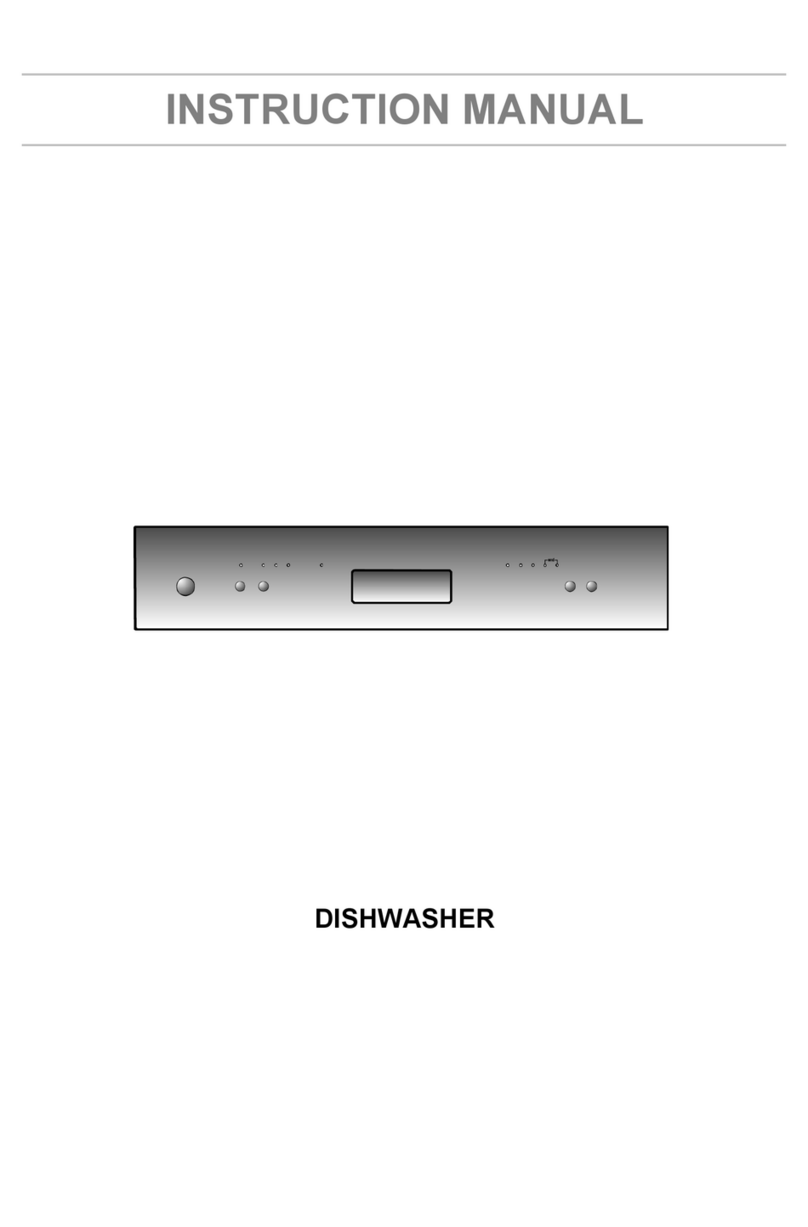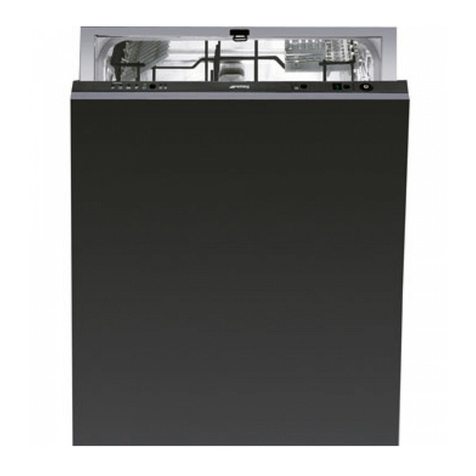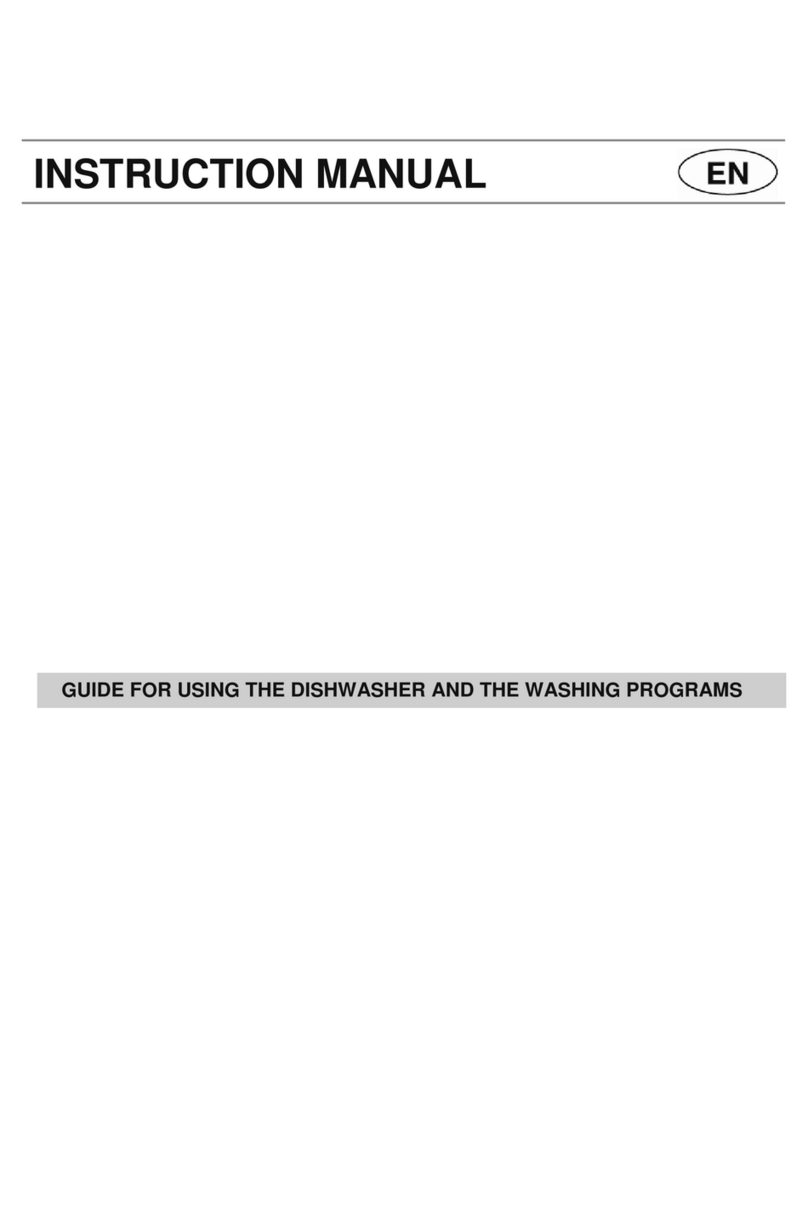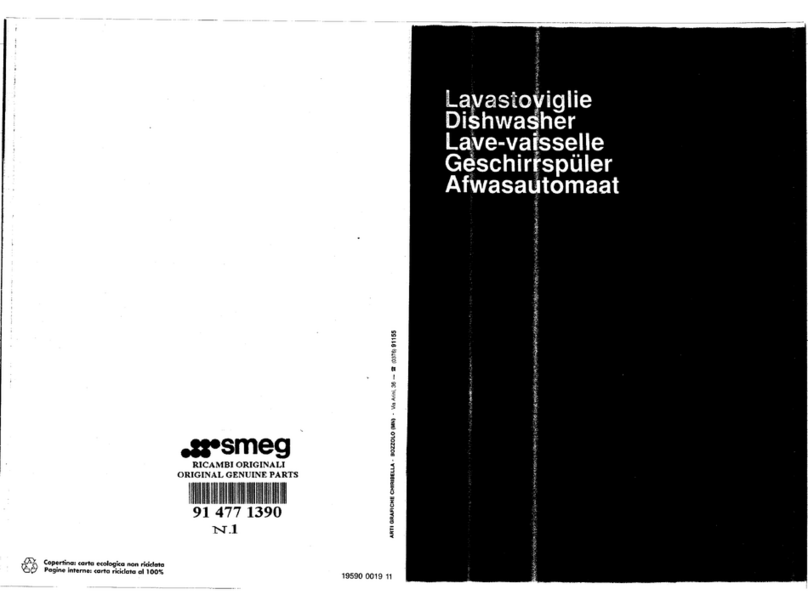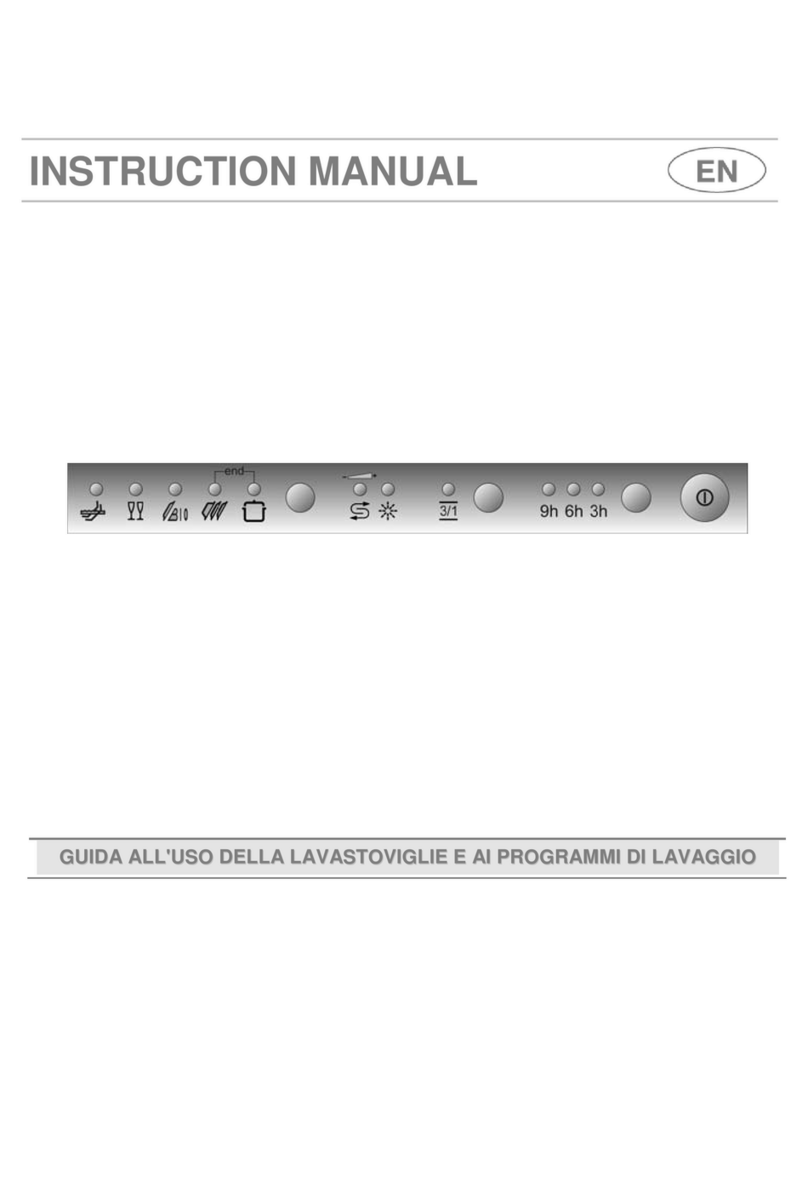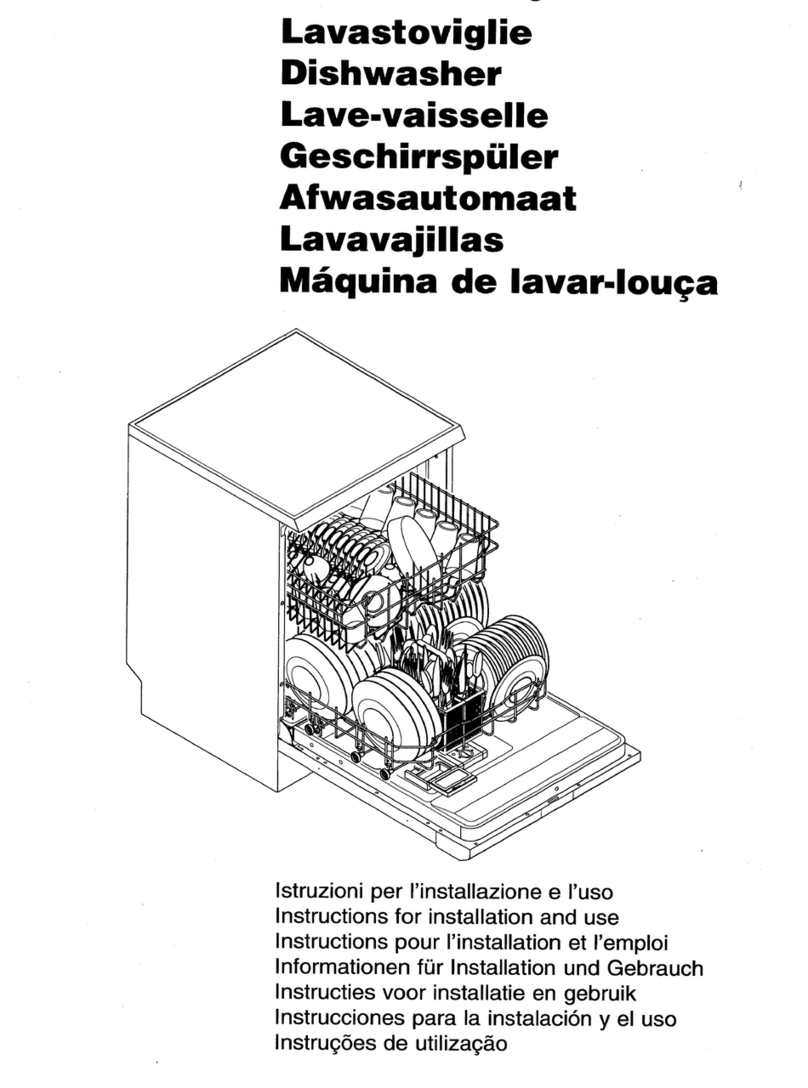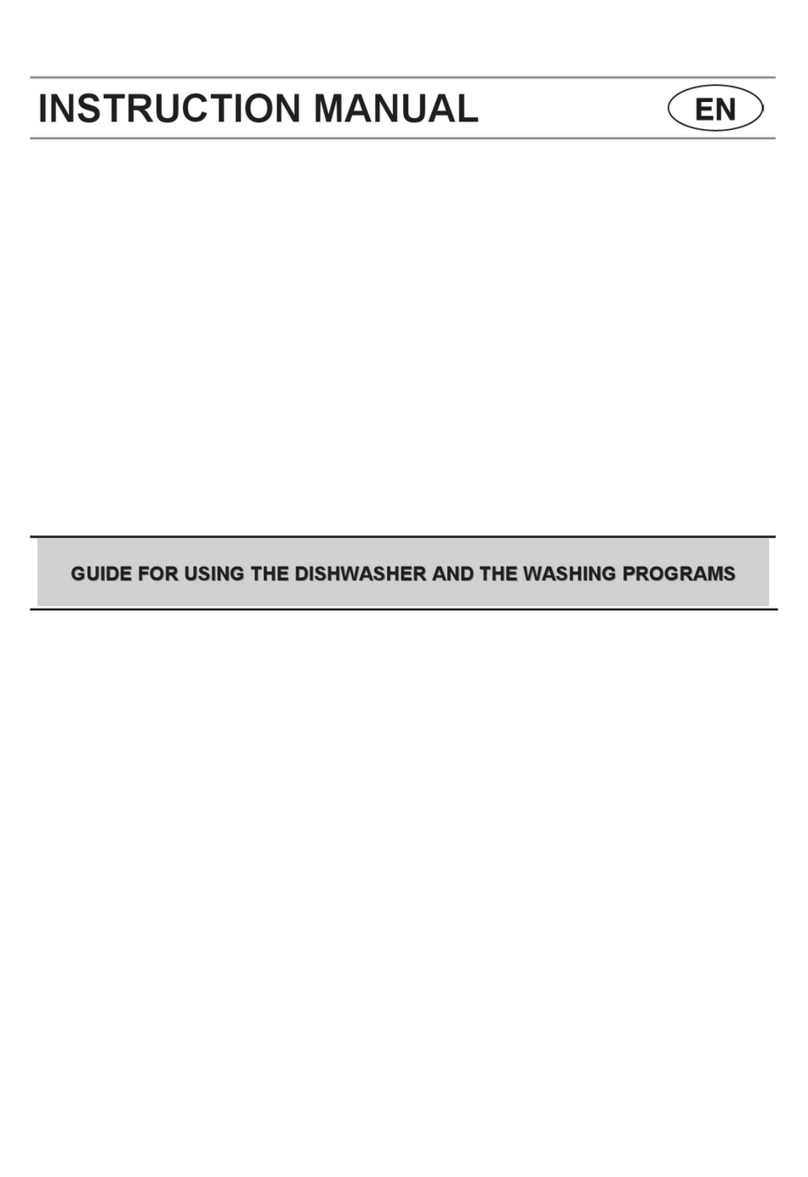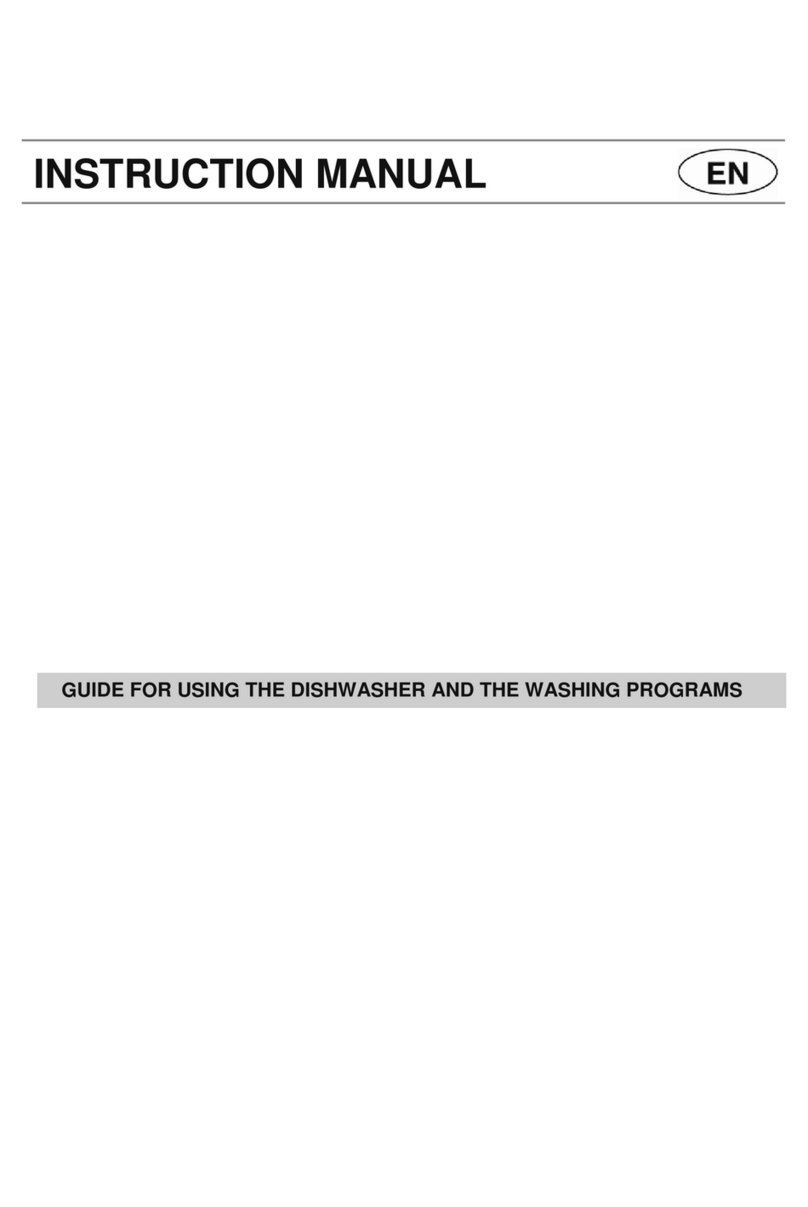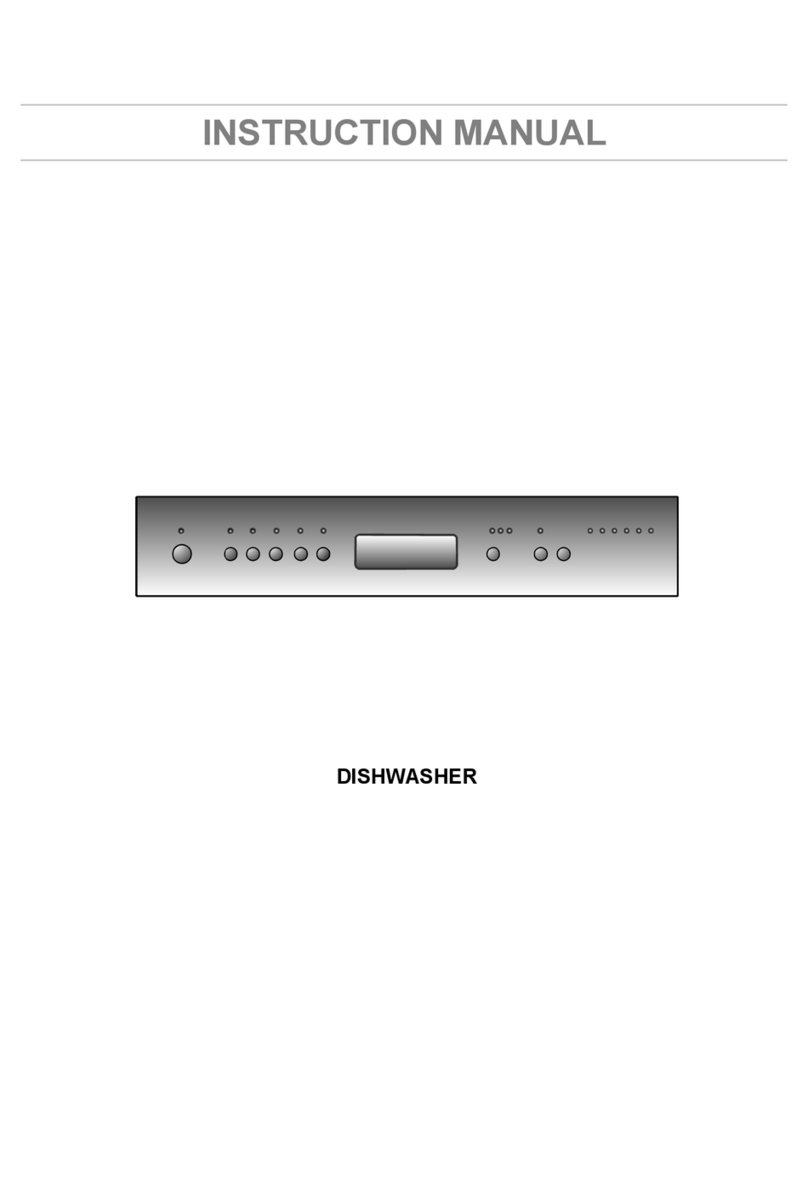
Contents
1
1General safety instructions_______________________________2
2Installation____________________________________________9
3Description of the controls ______________________________20
4Operating instructions__________________________________32
5. Cleaning and maintenance______________________________52
6. Troubleshooting. What to do if...__________________________55
7. Troubleshooting ______________________________________60
Thank you for choosing one of our products.
You are advised to read this manual carefully; it contains all the
information you need about the right conditions for the proper, safe use of
your dishwasher.
The individual sections are laid out to provide you with a step-by-step
guide to all your appliance's functions; the texts are easy to understand
and are complete with detailed illustrations.
Recommendations are given for the correct use of the baskets, spray
arms,containers,filters, washing programs, and for operating the controls.
Following the cleaning instructions provided here will keep your
dishwasher's performance at peak levels in the long term.
This user-friendly manual will provide answers to all your questions about
use of the dishwasher.
INSTALLATION INSTRUCTIONS: these are intended for the qualified
technician who must carry out the installation, hook-up and testing of the
appliance.
USER INSTRUCTIONS: these consist of recommendations for using the
appliance, a description of its controls and of the correct cleaning and
maintenance procedures.
This manualincludes options, programs and features that may be present
on the type of dishwasher you have purchased. For the specific
characteristics of your model, please refer to themanualsupplied together
with the product.
